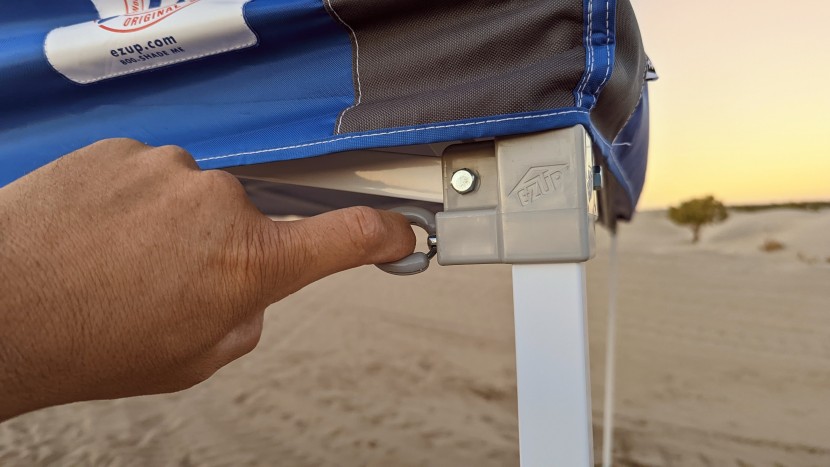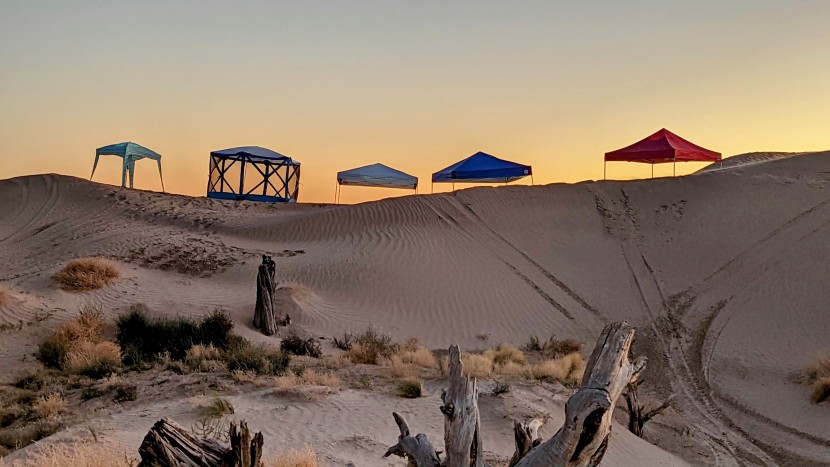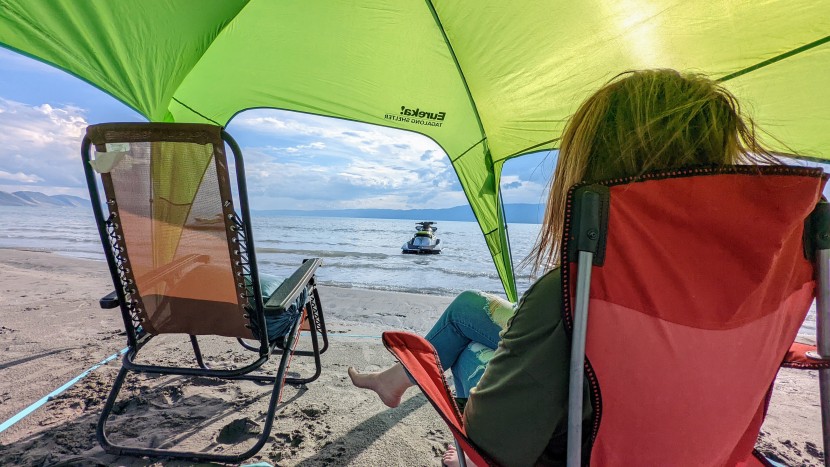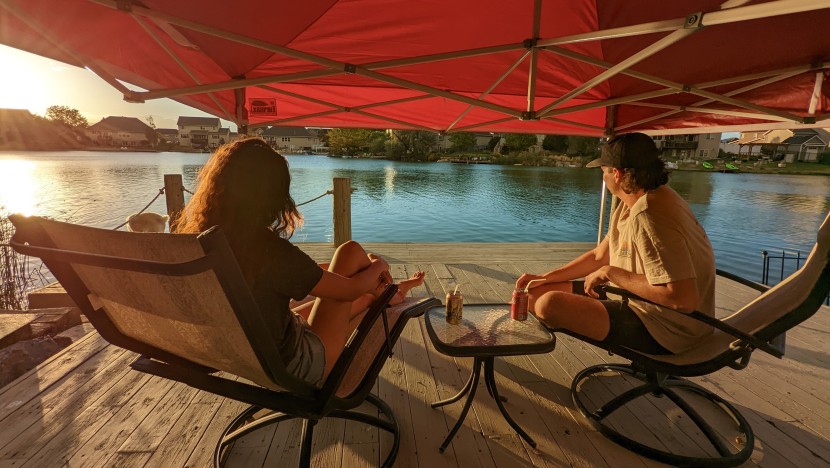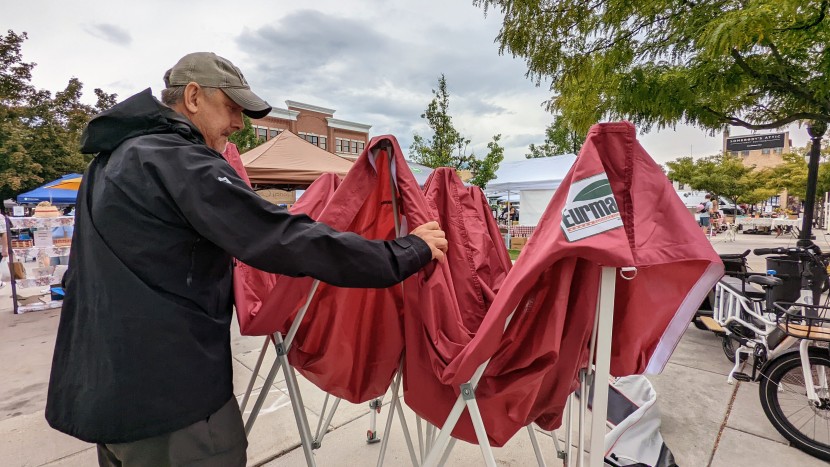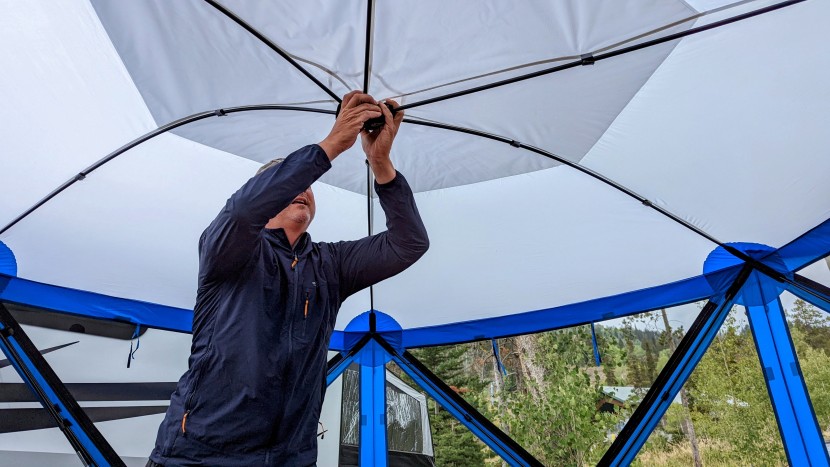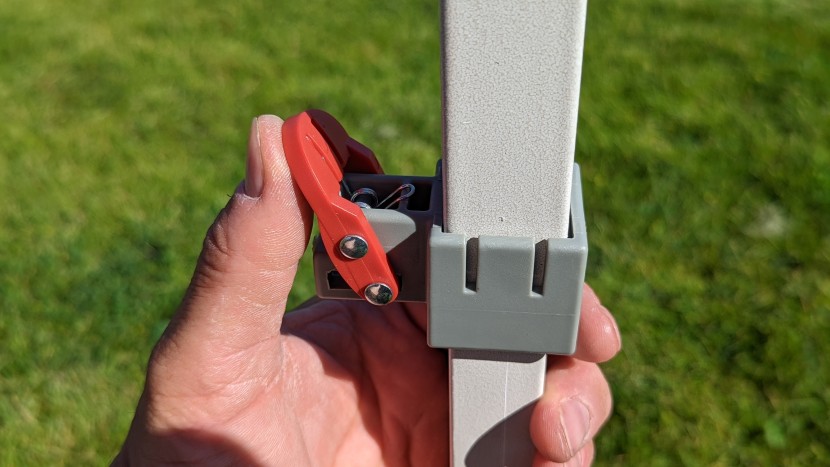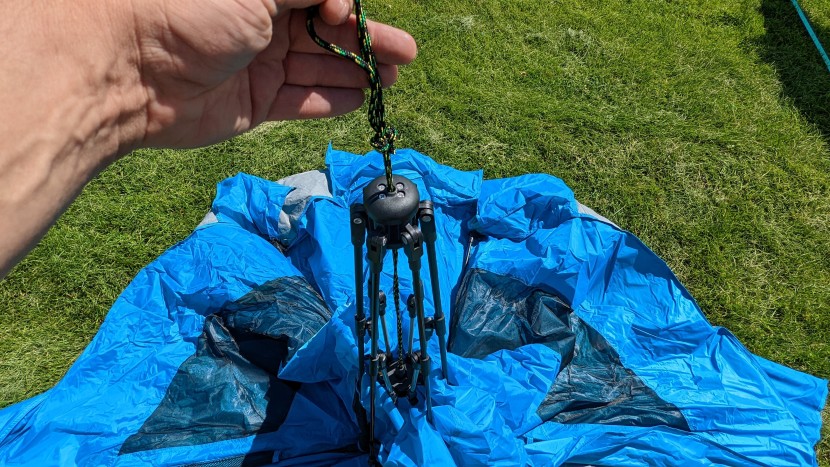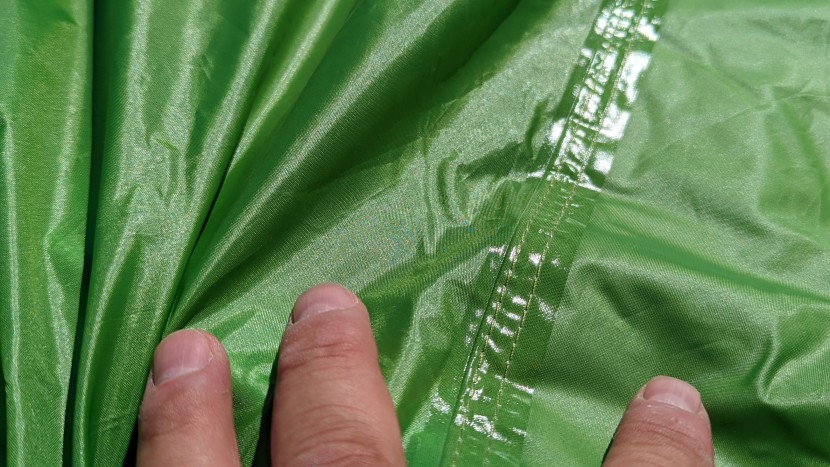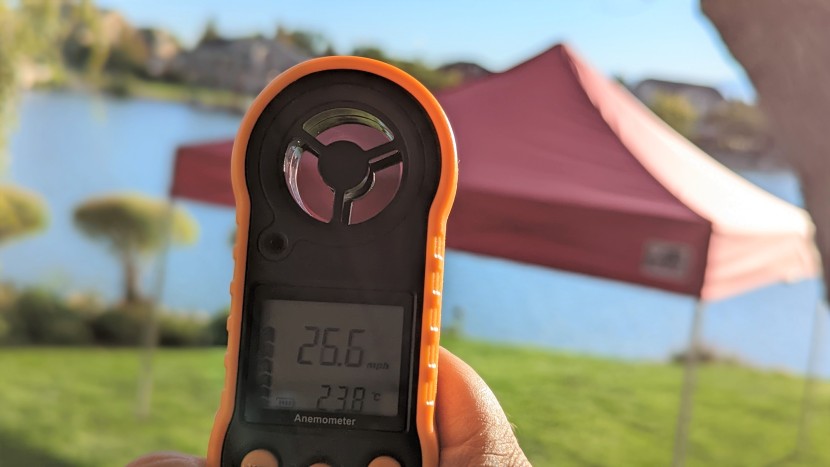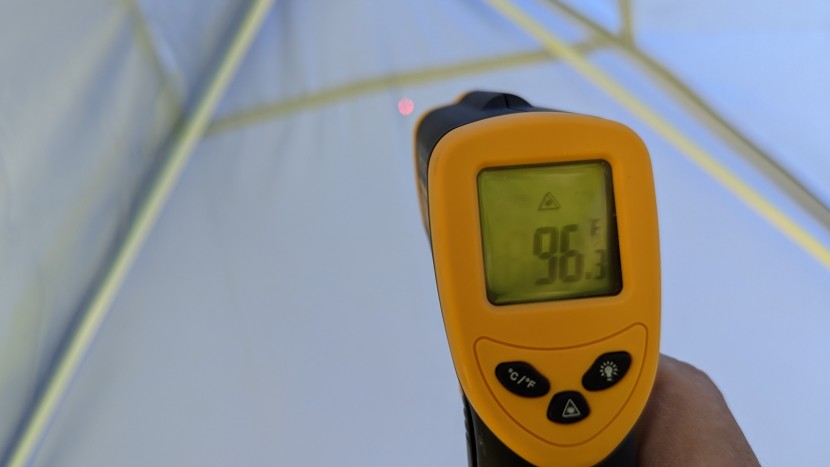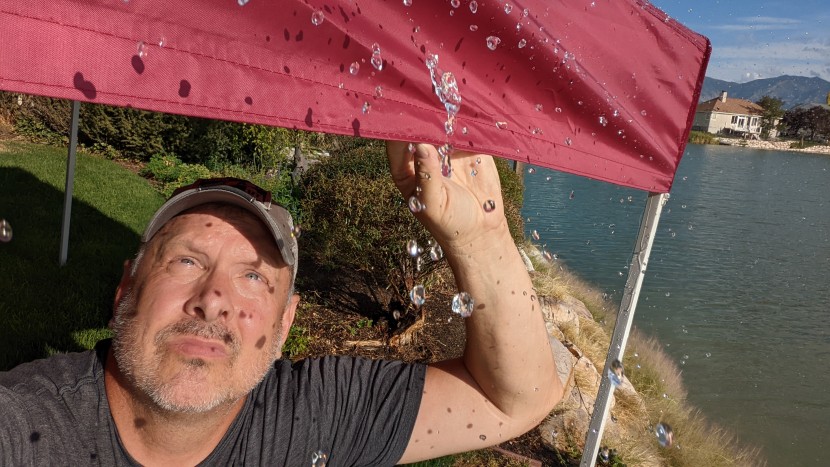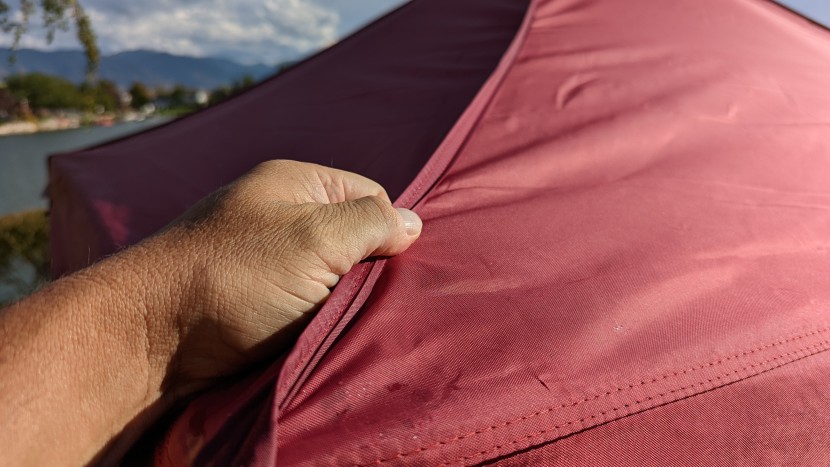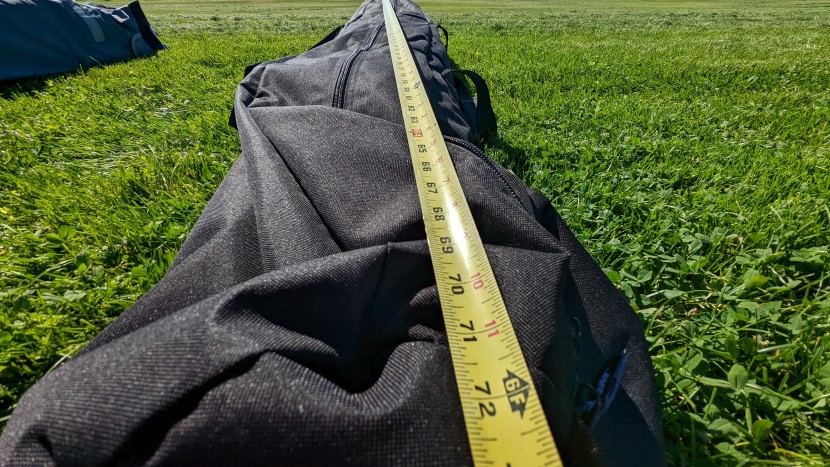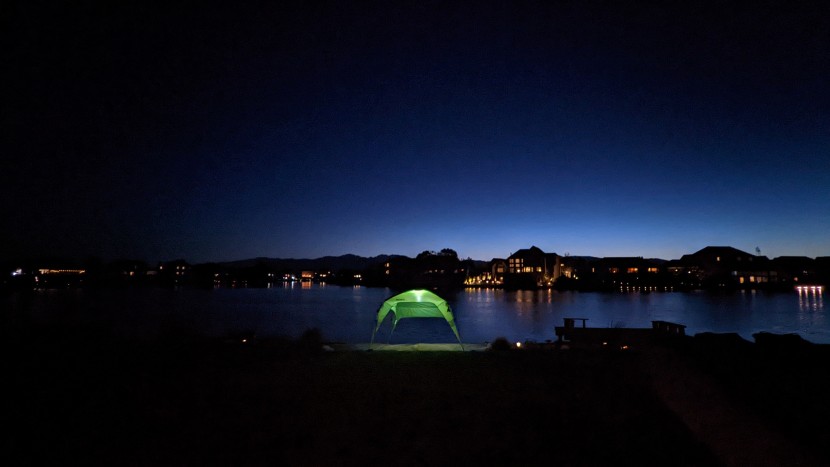Each product mentioned in this review was examined by our own eyes and touched by our hands in various situations and locations. We picked five metrics, outlined below, to give us the most comprehensive understanding of each canopy. As some metrics are more pertinent than others, we weighted each according to their importance.
Functionality
This metric focused on the overall function and livability of each product. Simply put, does it do what it was designed to do, and do we enjoy using it? We wanted to know if the product's design is accommodating, comfortable, and effective. In our testing, we measured the dimensions of each canopy, giving the highest scores to canopies that provided the most usable space.
We also ranked each canopy on how comfortable it was to enter and exit, awarding top scores to those with the highest valances. We looked for design flaws that hinder free movement when under each canopy. We noted unique features, like storage pockets and gear hooks, which add to the product's functionality and set it apart from its competitors. Since the primary function of a canopy tent is to provide shade, we got a very early start on a cloudless day and assembled each canopy side by side in a local park.
From there, we studied each canopy as the sun moved across the sky into the late afternoon hours. We scored each structure on how well it produced shade throughout the day and which blocked the sun's rays most effectively. Adjustability is key when using canopies, so we ranked each by how many angles it could produce and how low or high each could be adjusted. Finally, after weeks of intense scrutiny, we gave each canopy our subjective score for functionality. We gave the highest scores to those we found the most comfortable and accommodating. After quantifying our results, we averaged all the scores to determine one overall functionality score for each product.
Ease of Set Up
Canopies that can be set up smoothly are more enjoyable to use than those that aren't. This straightforward metric focuses on each product's overall ease of setup. For example, an expensive product can be of the highest quality, but it becomes more undesirable if it is extremely labor-intensive to use. Our tests for this metric began with timed setup and teardown examinations. Reviewers were timed while each canopy was deployed and stowed ten times. Those times were then averaged, and each product was scored. Those with the lowest times received the highest scores.
We balanced out these timed scores with our subjective scores. We examined each setup and takedown process and determined whether it was intuitive and straightforward. For example, could each canopy be set up for the first time without referring to the instructions? Did designers create a product that fits together logically? Canopies that required unique processes to set up, like sandbags, received lower scores than canopies that unfolded and quickly popped into place.
We also determined whether each canopy was simple enough to be set up by only one person. Those that one person could easily deploy scored higher than those that could not. Additionally, we gave bonus points to canopies that offered unique, proprietary design features meant to improve the setup and takedown processes. We also looked for features like levers specifically designed to prevent the fingers and hands from getting squeezed and injured.
After recording all our scores, we averaged them to determine one overall ease of setup score for each product. Generally, we found no correlation between price and this metric.
Protection
Certainly, the primary function of a canopy tent is to provide shade. However, we wanted to find products that could do more than just block out the sun. To do this, we looked into how well each product protected against a variety of elements, including sun, wind, and rain. Additionally, those that offered additional protection from insects were awarded bonus points. Likewise, canopies that could be combined with optional accessories, such as additional shade walls or weight anchors, received higher scores.
We separately placed each canopy in front of a large, high-powered commercial fan to determine wind resistance. With the help of a digital windspeed gauge, we fine-tuned the fan's output to achieve three increasingly higher wind speeds.
Each canopy was individually exposed to the three wind speeds in five-minute increments. During each test, we examined each canopy's ability to stand firm. Those that swayed the least received the highest scores.
Following our wind tests, we searched each product for unique, built-in features that allow it to provide additional protection from the elements. Canopies that included ground stakes, guy lines, sandbags, flooring, or sidewalls received extra points. Furthermore, our final tests were aimed at rain and sun. After leaving all the canopies in direct sun for several hours, we tested the interior temperature with our digital thermometer. Specifically, we measured the temperature of the shaded ground before positioning ourselves under each canopy and measuring the temperature of the highest point of each ceiling. Those with the lowest temperatures received the highest scores.
Finally, we used a garden hose to simulate a substantial downpour. Each canopy was doused with water for five minutes to determine how well it repelled rain. Those with additional weather-taped seams performed the best and received the highest scores. We then averaged out all the scores to determine one overall protection score for each product. Generally, we found the higher-priced items to have the highest level of protection.
Craftsmanship
To determine the overall craftsmanship of each product, we conducted several examinations and combined our findings with our institutional knowledge about materials and design. We examined all stress points, junctions, seams, frames, and fabrics and gave each canopy scores on the quality of these components. Those that employed more plastic or aluminum scored lower than those with steel. Likewise, thicker canopies received more recognition than canopies made from thinner, less rugged materials.
We looked for double-stitched seams, powder-coated frames, and simple designs that incur less wear and tear. We then combined our findings with subjective scores based on our experience and product knowledge. We averaged out all the scores to determine one overall craftsmanship score for each product. Generally, we found the higher-priced items to have the highest level of craftsmanship.
Portability
Overall maneuverability and portability are important features of any outdoor product. Regardless of size or weight, products should be relatively simple to transport using average levels of effort. For example, a large, super-constructed canopy may be of the highest quality but too heavy to carry, too large to store at home, or too difficult to fit into a vehicle.
Our testing involved transporting each canopy 100 feet. Additionally, we transported each model countless times during weeks of use and study. In addition to carrying each product, we weighed each and gave the highest scores to the lightest products. However, we didn't want to assume a product must always be lightweight for easy transport. So, we also examined each carrying case for adequate handles, wheels, and straps that allow it to be transported without strain, regardless of size or weight.
We also believe portability is not only about how difficult a product is to carry or move but also whether the product can be easily stored in an average-sized car's back seat or trunk. Moreover, we wanted to know if each canopy tent could be stored easily at home or in an RV, so we measured the stored dimensions of each canopy and scored them accordingly. Finally, we added our subjective scores based on our testing experience and product knowledge. We then averaged everything out to determine one overall portability score for each product.
Conclusion
We feel our testing was unbiased and thorough. We tried to see things through the eyes of the customer to effectively score each model and find the canopies best suited for a wide variety of activities. We hope we've been able to help you find the perfect canopy for your needs.

